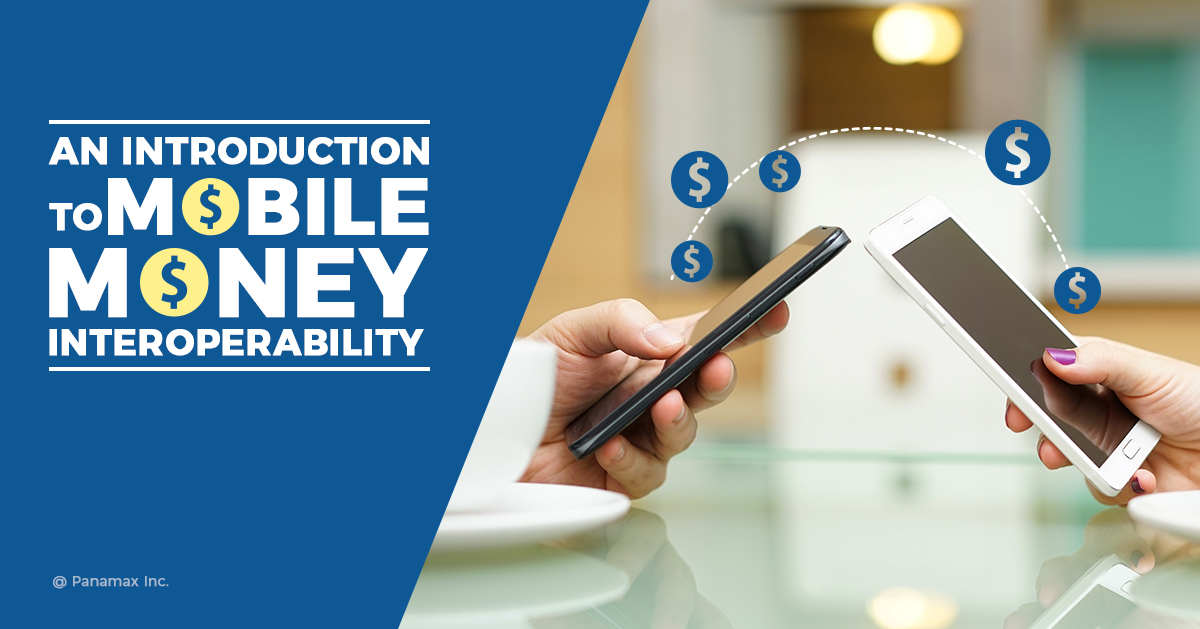Mobile Money - an unadorned concept that was initiated to enable P2P transfers soon turned into a revolution. A channel that began with the plain idea of performing payments from/via a mobile device took Fintech space by storm. Mobile money established itself as an alternative to the formal banking services in no time. To put things into perspective, these services have successfully benefitted people in close to 95 countries through more than 1 billion registered accounts, 290 deployments and $7.3 billion in international remittances.
Ease of Use with Interoperability
What makes mobile money more interesting is its interoperability - the trending buzz word in the digital financial space. With interoperability, imagination turned into a reality and this reality brought a dramatic change in the mobile money market with its ease of use. Interoperability redefined transferring money -
- Between different mobile wallets/accounts
- From mobile money wallets to merchants
- From mobile money wallets to bank accounts
Mobile money interoperability is the ease of transferring money without even considering which m-wallet/service the consumer uses. Its ease of use lets you make various transactions using only your phone.
Region Specific Interoperability
Interoperability in Africa
Africa witnessed 481 million accounts with approximately 51 million new account registrations between 2019 and 2020, carrying out over 24 billion transactions worth $461 billion, according to GSMA. The pace with which mobile money and interoperability are gaining traction, Africa is surely a region of interest for the mobile money operators.
Let’s take a closer look with respect to a few popular countries of the continent:
Tanzania: The Early Bird
Back in 2008, when mobile money service was a mere concept, Tanzania became one of the earliest countries to launch it. According to a report by Mobile Money Channel, the country had more than 11 million active mobile money accounts by the end of 2013. In December 2013, transactions worth $1.8 million were reported on mobile money platforms. At the end of 2015, one-third of the active mobile money accounts in East Africa came from Tanzania.
Additionally, strategic steps were taken by the Bank of Tanzania that had a progressive approach since the early days and encouraged interoperability among the mobile money service providers. Tigo and Airtel were the foremost mobile money service providers to get into a bilateral arrangement in September 2014 with subsequent commercial launch in February 2015. It was then followed by Tigo and Zantel (now Millicom), and then Vodacom with Airtel and Tigo.
Mobile money interoperability emerged as an innovative development in Tanzania and to date, it is cited as the most strategic collaboration of industries.
Ghana: The Evolutionary
Initial restrictions by the Bank of Ghana blocked the launch and acceptance of mobile money. A revision in the guidelines in 2014 eventually led to mobile money becoming the most trusted and preferred mode of payment in the country.
In accordance with the data published by the Bank of Ghana in March 2020, there are now 14.7 million active mobile money accounts and 235,000 active agents. An estimated 3 to 4 million Ghanaians live abroad and send money to their family back home using mobile money. With the interoperability feature launched almost 2 years ago, it seems to have been accepted widely in terms of not only P2P transfers but also by a large segment of employers for salary disbursement.
Senegal and Other West African Countries: The Followers
Following the footprints of West African countries like Ghana and referring to the immense success of UPI in India, Senegal and some other West African countries are exploring the option of mobile money interoperability. It would be interesting to know about the acceptance and success rates, and if it will be as similar as that in Ghana and Tanzania.
Interoperability in Asia
India: Unified Payments Interface (UPI)
Let’s go back to the time of demonetization in India - the cash crunch, long queues outside banks, and what not. But there was a segment of consumers that stayed aloof from this crisis. This segment had already adopted digital channels to make day-to-day transactions like payments in grocery stores or to local vendors and transferring money to family members, everything was done through electronic wallets. This segment of consumers significantly reduced the burden of the economy’s reliance on cash.
UPI has come in handy during the ongoing COVID-19 crisis as well. One of the major advantages of this system is that it is not restricted by any specific type of mobile wallet solution or applications and can be seamlessly used across a number of easily available services. Recently I had a brief conversation with an older family member to check on his well-being during this unprecedented crisis of COVID-19. We ended up discussing the measures that can be taken to limit the spread. The man mentioned about the ease of making payments through UPI. What caught my attention was, his excitement when he mentioned that UPI does not restrict itself based on the type of mobile money wallet or app being used - it works seamlessly across any UPI application you use. This is an important revelation coming from an older person, when UPI payments are widely seen as the service for the younger generation.
With the Government supporting the UPI scheme, it is a win-win for the mobile money services ecosystem as well as consumers, delivering a perfect end-to-end experience.
Conclusion
Interoperability is not just a feature; it is part of a larger ecosystem. It’s a strategy built on the benefits of collaboration. A collaboration of industries ranging from mobile network operators to money transfer operators to banks & financial institutions. Mobile money interoperability is another step towards the global approach of a cashless economy, a revolution in the Fintech space.
Contributing Writer: Krati Dubey is a content creator at Panamax Inc and has over 6 years of experience in the digital domain. She holds a degree in Journalism and enjoys writing about everything tech.


















